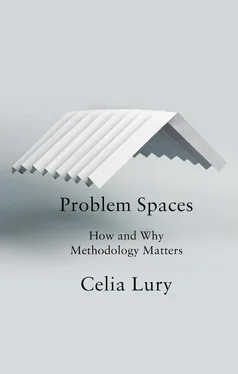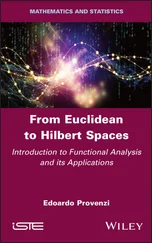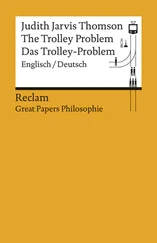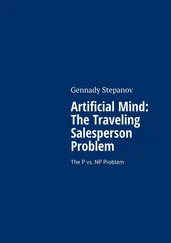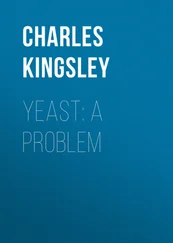Inquiry thus involves developing the meaning of ideas in correspondence with observed facts: this is what is involved in the transformation of a situation into a problem in relations of connection and continuity. For Dewey, this distributed and dynamic process or path of inquiry should continue until a determinate situation, ‘an objectively unified existential situation’ (1938: 104) is reached.
Like Dewey, Herbert Simon is of the view that a problem is not given but must be created. In doing so, he introduces the concept of problem space:
Every problem-solving effort must begin with creating a representation for the problem – a problem space in which the search for the solution can take place. (1996: 108)
He argues that, as a purposeful representation, a designed problem space is a methodological artifact that is always ‘in imminent danger of dissolving and vanishing’ (1996: 131). It is sustained, however, by the boundary or artificial sciences. This is the term he uses to describe the set of methodological practices by which design 2can be refined to be beneficial to society. A key element of design for Simon is the partitioning of a complex problem into sub-problems through boundary-making. Through boundary-making, Simon says, problem-solving can often be accomplished through the use of relatively simple recursive operations such as those performed by bundles of algorithms. He uses the analogy of a pair of scissors to describe boundary-making or partitioning: he writes: ‘Human rational behavior … is shaped by a scissors whose blades are the structure of task environments and the computational capabilities of the actor’ (1990: 7).
Simon’s ideas lend themselves to be taken up in an instrumental – means–ends – fashion. His advocacy of the method of optimization, for example, is often interpreted as involving the recursive use of three classes of processes: search rules, stopping rules and decision rules, in relation to predetermined goals. However, while Simon’s proposals were intended to have clear practical implications (like Dewey, Simon was concerned with the transformation of situations), he explicitly argues against the use of pre-determined goals in problem-solving. Indeed, not only does he stress the multiplicity and variety of satisfactory rather than optimum solutions (satisficing), he also emphasizes the contingency of the process of reaching a solution and describes negotiating the process of reaching a variety of solutions in terms of style.
Variety, within the limits of satisfactory constraints, may be a desirable end in itself among other reasons because it permits us to attach value to the search as well as its outcome – to regard the design process as itself a valued activity for those who participate in it. (1996: 130)
He argues that problem-solving systems should not merely assemble solutions but must rather ‘search for appropriate assemblies’ (1996: 124).
Simon further argues for the importance of discovering new representations of problems, rather than merely deploying existing framings of a problem, even while acknowledging that the process of discovery is poorly understood. In describing this process, the terms ‘situation’ and ‘relevance’ (both of great importance to Dewey) creep in:
Focus of attention is the key to success – focusing on the particular features of the situation that are relevant to the problem, then building a problem space containing these features but omitting the irrelevant ones. This single idea falls far short of a theory of representation change but takes a first step toward building such a theory. (1996: 109)
He argues that it is only the practice of search guided by ‘the most general heuristics of ‘interestingness’ or novelty [that] is a fully realizable activity’ (1996: 162), and says, ‘A paradoxical, but perhaps realistic, view of design goals is that their function is to motivate activity which in turn will generate new goals’ (1996: 162). Indeed, he proposes that ‘One can envisage a future … in which our main interest in both science and design will lie in what they teach us about the world and not in what they allow us to do to the world’ (1996: 164). He provides here a way of thinking about how methodology might direct the continuity-in-transformation of problems to realize epistemological values.
The times of problem spaces
At a basic level, both Dewey and Simon say that a problem is not simply found but must be composed or represented, 3and then represented again. 4Both thus understand what I am calling the composition of a problem in terms of a process of re-presentation, understood as presenting – or perhaps better, situating – the problem again and again as part of a methodologically informed process. Dewey proffers the drawing of a line of inquiry as an overarching term, while Simon uses the term design. For both, the process of re-presentation is an active practice in which a problem is repeatedly composed or put together anew. For both, the composition of a problem across a problem space involves repetition of one kind or another and is thus a process in which temporality is of profound importance.
Indeed, both Dewey and Simon show that the methodological process I am calling composition always involves the operation of ‘an alternation in time’ (a term I adopt and adapt from the anthropologist Maurer, 2008; see Tooker 2014). Neither believes it sensible or appropriate to restrict the temporality of composing problems to a linear sequencing or staging of re-presentation. Instead, both consider composition to involve engaging with the non-linear organization of uncertain or indeterminate temporal relations across a space. In other words, for neither Dewey nor Simon is the indeterminacy of the relation between a problem and its situation or environment to be eradicated by containing it in space or time; rather, it is the stimulus for the inventiveness of the process of inquiry or design. Both thus recognize the methodological potential of problem spaces. However, while Dewey and Simon share an emphasis on the importance of a non-linear temporality for the expression or realization of methodological potential they differ in their understanding of what is involved: for Dewey, indeterminacy is understood in terms of the existence of solutions as possibilities in the present, and for Simon it is to do with the inevitability of contingency in the composition of a problem; that is, contingency becomes a resource because problems can always be other than they are.
To start with Dewey: he argues that, in the pursuit of inquiry, a solution must be a mere possibility in the process of problematization, not ‘an assured present existence’ (1938: 118). This point is of central importance to him: it is what leads him to argue that a problem is never static or fixed, but emerges in constantly changing relations to a situation that is itself constantly changing. He asserts, ‘To mention the temporal quality of inquiry is not simply to assert that inquiry takes time, but that the subject matter of inquiry goes through temporal modifications’ (1991: 125). As Paul Rabinow puts it, for Dewey, ‘Thinking was itself a temporal experience or, to be more precise, thinking was a temporal experiment’:
From the standpoint of temporal order, we find reflection, or thought, occupying an intermediate and reconstructive position. It comes between a temporally prior situation (an organized interaction of factors) of active and appreciative experience, wherein some of the factors have become discordant and incompatible, and a later situation, which has been constituted out of the first situation by means of acting on the findings of reflective inquiry. The final solution thus has a richness of meaning, as well as a controlled character lacking in the original. (Dewey in Rabinow 2009: 16)
Читать дальше
